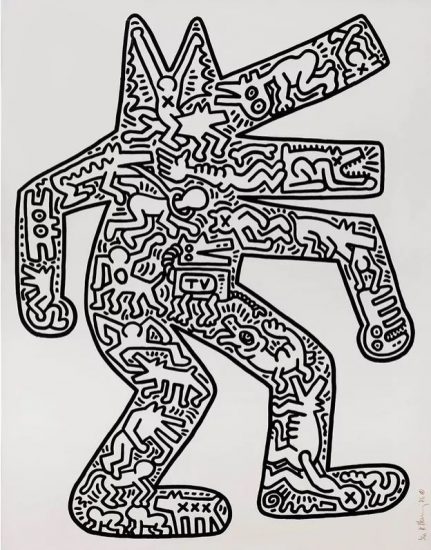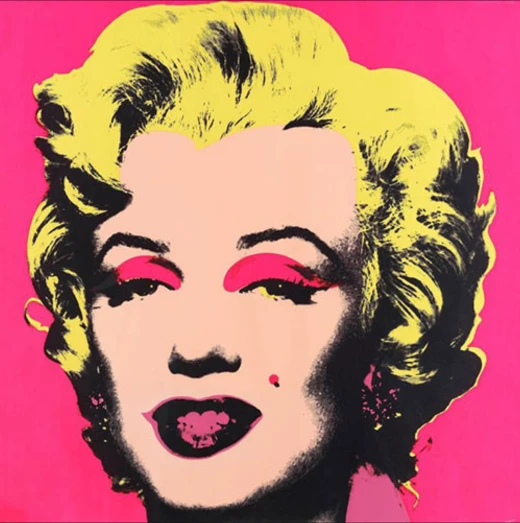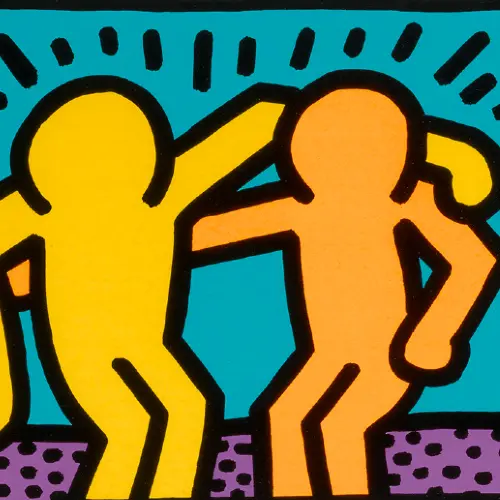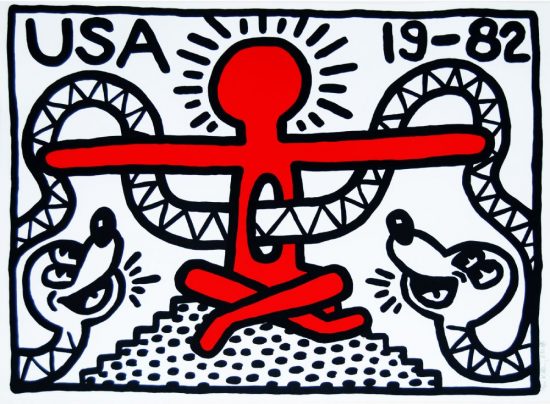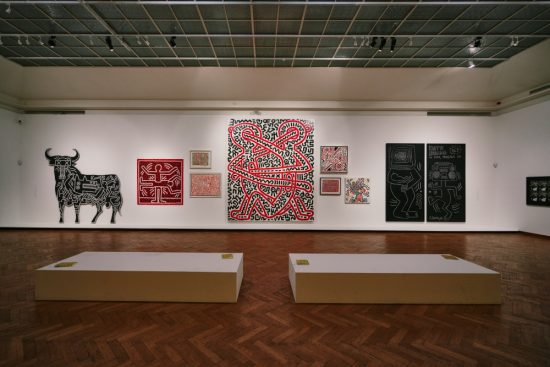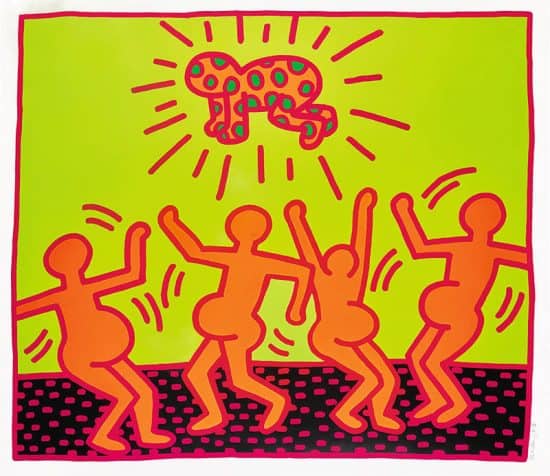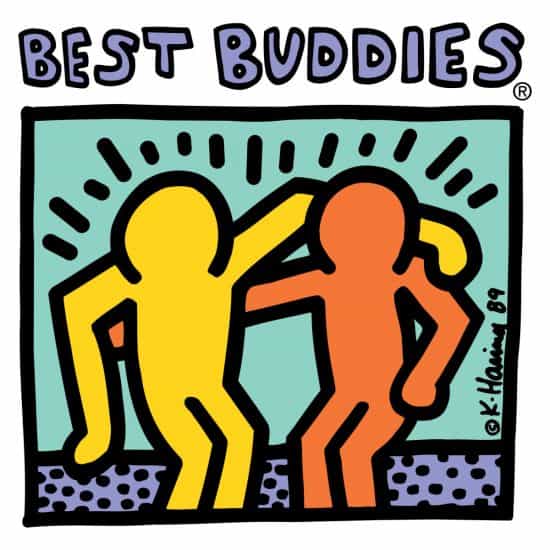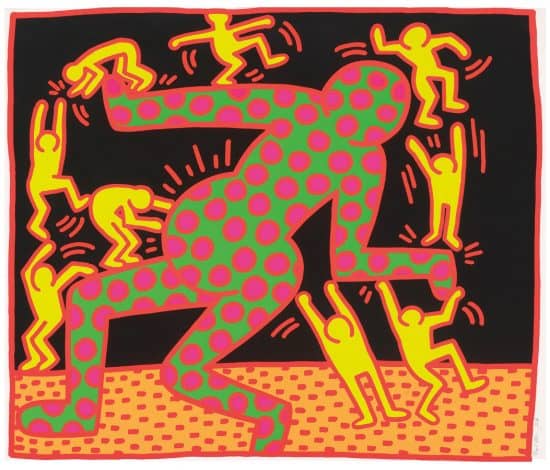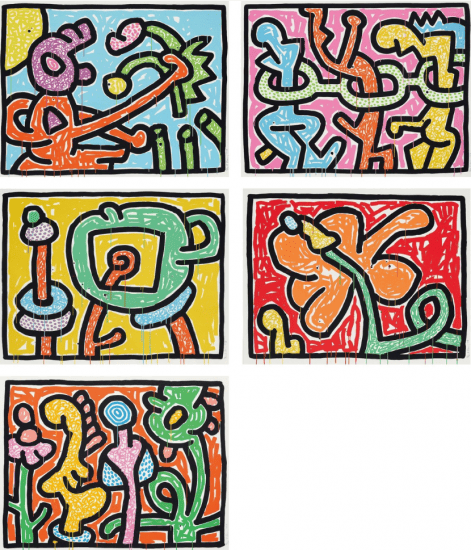Symbolic imagery in artwork can be traced back to as early as cave drawings, into the multitude of different artistic movements that have followed; religious iconography being one of the most notably recognizable, followed by animals and more to the point, dogs. They are a representation of their behavioral namesake of man’s best friend in the sense of loyalty, companionship, and obedience has followed them into their depictions of art.
However, pop artist Keith Haring, who is known for his masterful craftsmanship of spreading a message through his simplistic forms and bright colors, integrating dogs, especially barking dogs, as a main outlet for sharing his ideas and beliefs. Moving away from the traditional perception of these lovable animals that society knows and believes them to be, Haring was interested in pushing the perceptions created by society and asking his audience to rethink their value, and to question what things we tend to ignore.
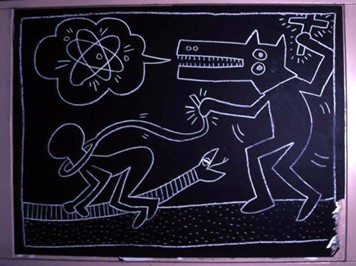
Keith Haring’s dog motifs began to appear in his subway drawing series from 1980-1985. During this time, he would draw on matte black paper with white chalk, posting them over expired subway advertisements. Haring is known for wanting to create work that was accessible and enjoyable to as many as possible instead of the select few who could afford it, and his subway drawing paved the way for art accessibility. None of his works in his Subway Drawings are titled, ensuring that each person could create their own interpretation rather than having their view influenced subliminally by Haring’s intention.
Dogs in Keith Haring’s works started as a mythical creatures, indistinguishable forms that eventually morphed and more closely resembled dogs with square mouths, sharp ears, and the occasional lines that surround them to indicate the sound of a bark.
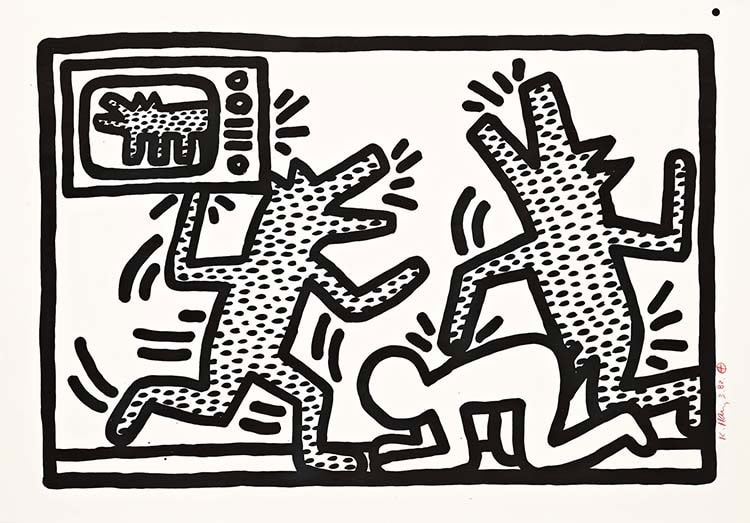
As they are now, these dog motifs became symbols of abuse in power, government, and oppressive regimes that demands obedience and represents authority.
In instances where Haring has depicted a dog standing on two legs or combined with a human figure, he was illustrating caution of those in power, while simultaneously nodding to the often overlooked and over ignored oppression in society. By creating a seemingly playful figure to his audiences as a way to gather their attention, Haring was gently reminding them to question what they may assume at first glance and to push past their original perceptions.
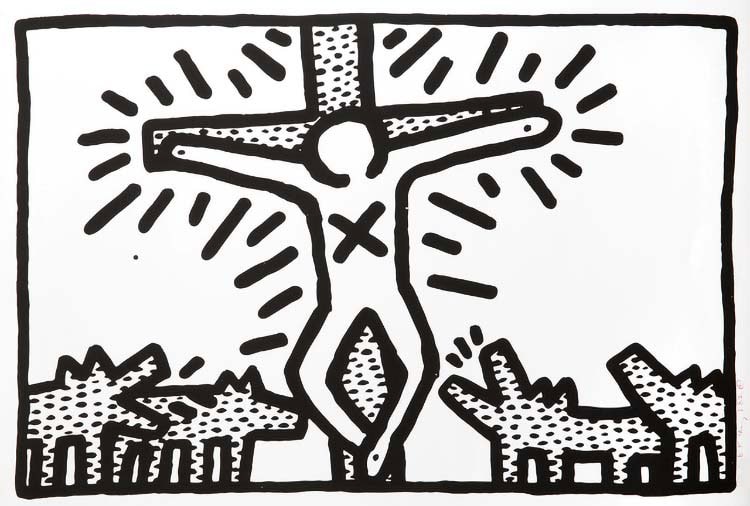
Though there is an inherent seriousness to the majority of dog works Keith Haring has created, in which there are many, he has also exemplified their depictions by create dogs of a more humor filled tone; some dogs are DJs, some dance and laugh, bark, and more. Haring’s versatility in his works mirrors how he believed himself to be, multifaceted and well educated in the matters that effect the everyday person.
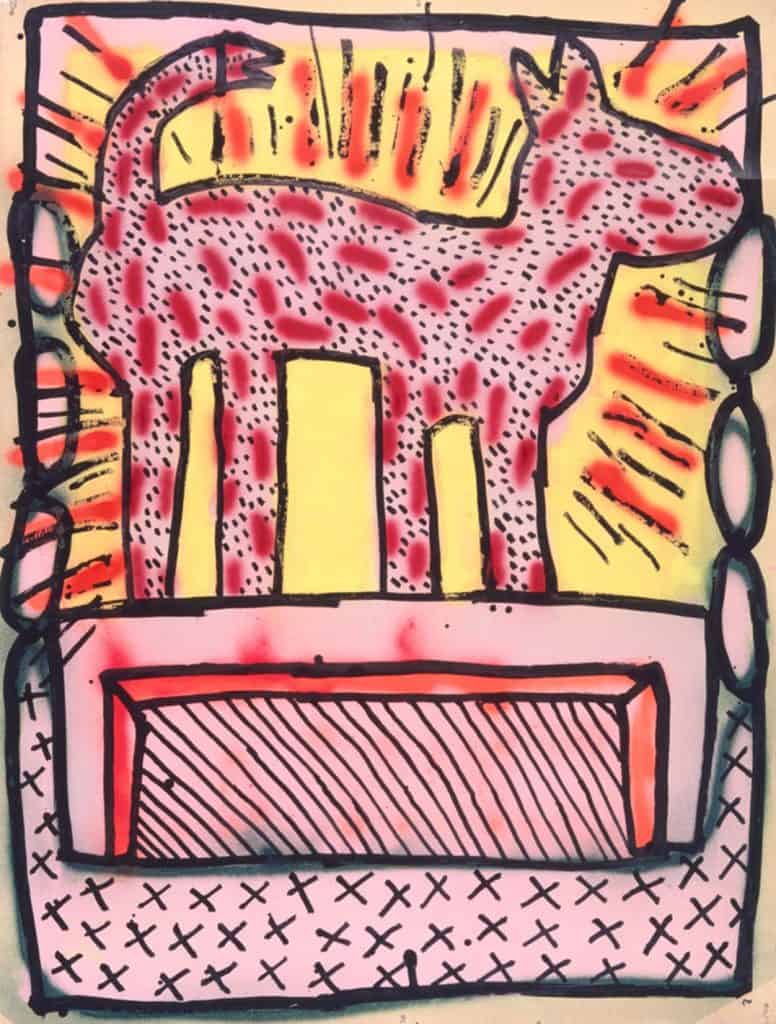
What is the Keith Haring Dog?
The dogs really were representational of human and animal. In different combinations they were about the difference between human power and the power of animal instinct.
Keith Haring in his 1989 Rolling Stone interview
What is the Keith Haring Barking Dog representing?
The Barking Dog stands for all abuses of power, government, and oppressive regimes that demand obedience and represents authority.
Is the Barking Dog a Keith Haring motif?
The Barking Dog makes is one of Haring's most iconic symbols from his oeuvre of visual/pictorial language.

